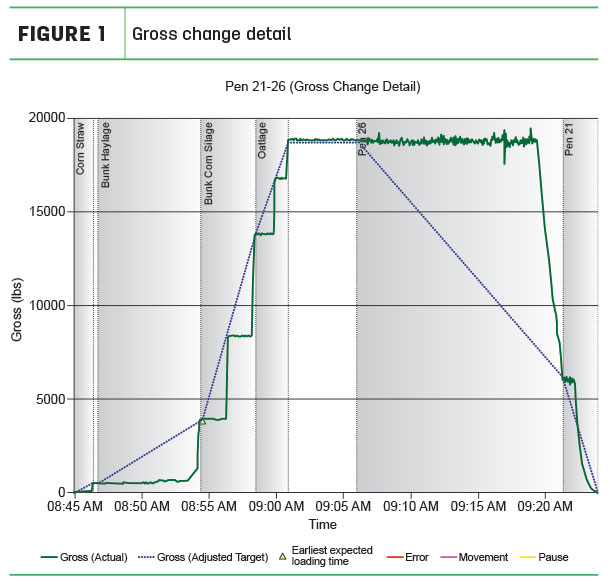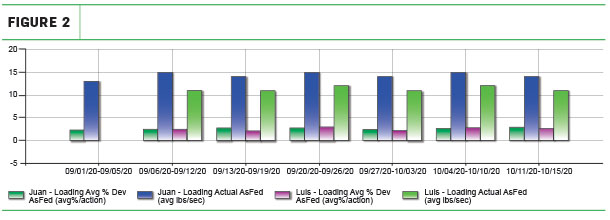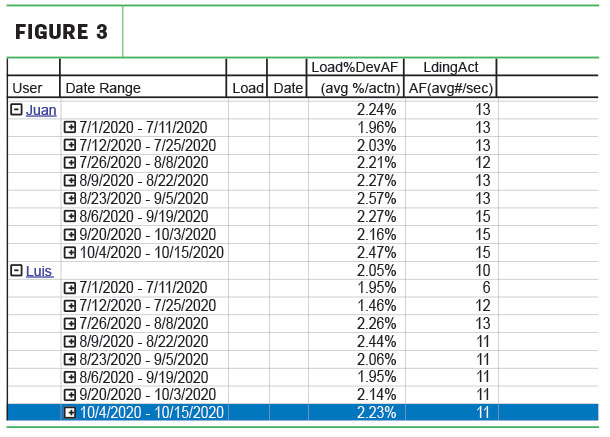The process of feeding dairy cows has evolved rapidly with the rest of the industry. Gone are the days of a scoop of this and scoop of that – from printed feed sheets to feed management software. We’ve certainly come a long way.
Decades ago, we started to use computer hardware and software to direct the feeding process, and we’ve evolved with technology’s pace to manage the entire feeding process better, since feed expenditure will always be the single largest expense of the farm.
In today’s world of low margins and volatility, we must utilize every tool available to optimize feed ingredients. By utilizing feed management software, producers can improve overall feeding performance, track inventory, individualize feeder incentives, and monitor financial metrics and feed efficiencies.
Feed management programs used today, such as EZfeed, FeedWatch, Feed Tracker – and more recently, cloud-based programs like MILC – utilize the latest technology, which allows producers to manage the feeding program with a smartphone. These latest programs work virtually through the cloud, allowing data to be transmitted from an office computer to a device, which communicates all information to the feeder. In some cases, the main office computer will also send data to the producer’s mobile phone.
Critical to the success of feed management software is accurate and timely data. It takes time, training and commitment to capture the value of these systems. The data provided by a feed management program should be taken seriously, as it could provide the opportunity to turn a loss into a profit in today’s market.
Herd performance will improve by actively managing feeder performance and verifying consistency
Feed management programs used today allow farmers to feed their cows every day of the year, consistently. Dairy cows are most efficient and healthy when things are consistent, especially when it comes to feed. If you want to improve herd performance and health, consistency is a must. Feeding the correct ration and desired amount every day will ensure a consistent diet when cows are there to eat it.
Many variables can interpret consistency in a feed management software program. For example, consistent feed times can be monitored to confirm that pens are being fed at the same time every day. If feeding time changes on any given day, it changes the cows’ daily routine, and cows typically have a negative production response when their daily routine is altered. Feed software programs provide a means for a feed manager to evaluate feeder performance. Deviations on loading, mixing times, delivery times and locations can all be evaluated (see Figure 1).

Evaluating multiple feeders’ performance on an individual basis allows management to recognize outstanding feeders and identify training opportunities, as well as the progress new feeders are making in learning their roles (Figure 2 and Figure 3).


Herd performance is maximized when each group is assigned and fed the correct ration and amount formulated
Feed management software can target actual Dry Matter Intake (DMI) for each group and/or pen and minimize the amount of refusal feed ending up in the push-out. Some dairies will feed milk cow push-out to heifers or other groups, so they become accustomed to having excess amounts of push-out daily. This practice is not very economical because a milk cow ration is significantly more expensive than a heifer ration. Milk cow rations may not deliver the desired amounts of nutrients heifers require.
Minimizing the amount of push-out going to heifers and feeding a diet formulated specifically for heifers can save the dairy money and make heifer rearing more efficient. This is where the feed management software becomes critical because a producer can evaluate DMI more accurately through the program, allowing the feeder to do a better job. For example, some dairies will target approximately a 2% refusal target amount; however, that amount could be different depending on the dairy. To closely monitor DMI and amounts delivered, the feed program can assist by feeding with scripted loads. A scripted load will allow the producer to input the load mix information for the feeder step by step for both loading and unloading, reducing the margin for error.
A producer can make many changes from the information provided by a feed management software program. Decisions and changes made in the feeding program can quickly be evaluated from an economic standpoint, as well as performance and impact on feed inventories. An example is the Quick Summary report in EZfeed (Figure 4).

The Quick Summary in EZfeed is a great tool to review herd production and economic performance. It provides intake data, feed costs, milk production parameters, actual feed cost per hundredweight (cwt) of milk, current milk price, income over feed cost (IOFC) and feed efficiency (FE). From this report, the dairy can make management decisions on the daily rations fed to improve herd performance and its effect on their bottom line.
This is done on progressive dairies that closely monitor their financials in real time. An example of this is a dairy re-evaluating rations to improve IOFC or looking for ways to improve their FE. For example, a dairy feeding a herd with both Jerseys and Holsteins averaging a DMI of 49.94 per pound per head per day with milk production at 68.01 pounds per head per day allowing a FE (milk) of 1.37. However, with a ration change that kept DMI and feed cost the same and increased milk production by 2 pounds, the FE would be 1.4. By improving the FE number by approximately .03, their IOFC has improved from $4.20 per head per day to $4.29 per head per day. A nine-cent improvement on IOFC might not seem like much, but when you calculate that across the entire milking herd, it quickly adds up.
Improve herd profitability with a feed management program through inventory management
Shrink can have a large influence on the profitability of a dairy, if not managed correctly. Feed management software programs can allow you to manage shrink on a per-ingredient basis. Deliveries, amount fed and current inventory can be tracked to have an up-to-date inventory. For on-farm ingredients such as silages, the information of importance regarding shrink would be storage, processing and dry matter. Many factors are involved in determining shrink values, but once data is collected and inputted into the feed management program, then inventory management can be dialed in and used to balance feed cost and overall profitability of the dairy.
Shrink values are of enormous importance to producers from a financial, sourcing and acquiring standpoint. Dairies typically will manage the usage of their forages for an entire year. Therefore, producers can use feed management software to dial in and gauge forage ingredient usage and avoid over-purchasing or under- purchasing a particular forage. For instance, if a dairy ends up under- purchasing a high-quality forage like corn silage, the dairy would have to find replacement feeds, which could be a dry hay combined with a more expensive feed ingredient, so the cost of the diet just increased.
Feed management software can be an asset and increase herd profitability by:
Efficiency
- Ensure proper ingredient quantities, mixing and delivery
- Evaluate feeder skill and need for training
Inventory management, shrink and economics
- Accurate tracking of inflow and usage of feeds
- Monitor shrink to save money
- Monitor true cost of feeding cows
Accuracy
- Estimates of DMI
- Bunk management
Feed management software does require a commitment
- Training employees to use properly
- Maintain and repair equipment to keep it functioning correctly
- Input accurate data and timely changes in feed dry matter and inventory numbers
In general, feed management software programs help optimize decision-making to ensure the best feed practices are utilized, which improves the efficiency, productivity and profitability of a dairy.






